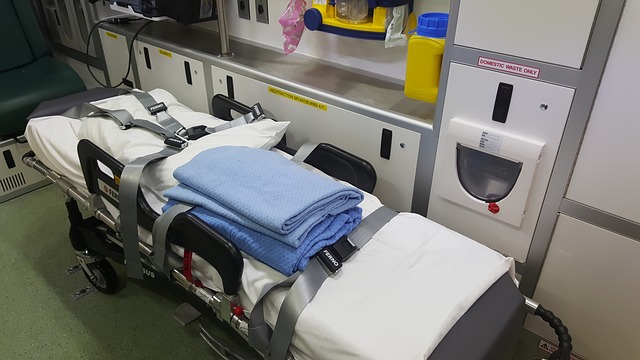
Ambulances transport the sick and injured every day all over the world. They provide a vital service to their communities, providing life-saving services daily. Getting those who need it initial care, moving the already sick to better situations: ambulances are integral. It’s a necessary service that really can’t be overrated. And when we need an ambulance, we certainly don’t expect it to create even more problems for us. However, when an ambulance is not tended to with as much diligence as its human payload, more problems are what we might just get.
Several years ago, our company took a series of swabs at a fire station and inside its ambulance. And the results were unnerving. The popular ENTER key on the CAD computer, used by all firemen, had 120,000 Colony Forming Units (CFUs). CFUs are units used in microbiology to estimate the number of viable bacteria or fungal cells in a sample, those capable of multiplying. The waste receptacle in the ambulance tested at 480,000 CFUs. It is evident that there is a problem in this case.
Low Levels of Resistant Bacteria Found in Chicago Area Ambulances
A preliminary investigation into bacterial contamination of Welsh emergency ambulances
Ambulance equipment contaminated with drug-resistant superbug
Bacteriological Surveillance of Ambulance Vehicles from a Tertiary Care Hospital of North India
Bacterial Contamination Conditions in Ambulances and their Equipment in South Korea
And it isn’t just the obvious surfaces inside an ambulance. Crew uniforms get contaminated and must be cleaned and stored properly to reduce the risk to crews and families at home.
UniStatus - a cross-sectional study on the contamination of uniforms in the Danish ambulance service
Air quality remains a huge issue within the fire service. Dirty air is linked to higher cancer rates. Most of the fire stations we have consulted with have MERV 8 or less filtering their system. This isn’t good enough. They should be filtering at submicron levels to contain smaller infectious particulate as well as using gas catching filters to be much more effective.
Harvard University Discovers Fire Station Dust Loaded with PFAS in Published Study
Study: Almost All Fluorine Detected in Fire Stations’ Dust Is From Unknown ‘Forever Chemicals'
Fire station air quality puts firefighters at risk
Chemicals in Air and Dust at Australian Fire Stations
Most crews are diligent about cleaning hands post-event but not always throughout the day. It is crucial to establish good and consistent habits so the hands are not picking up and transferring germs to other people and objects. Impeccable hand hygiene must be a constant emphasis for ambulance crews.
Compliance with hand hygiene in emergency medical services: an international observational study
Hand Hygiene of Emergency Medical Service Healthcare Providers
Hand Hygiene in Emergency Medical Services







